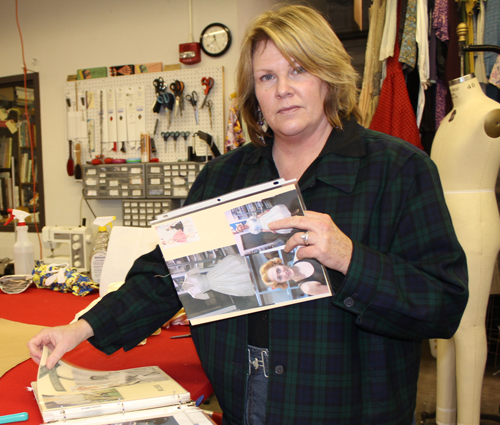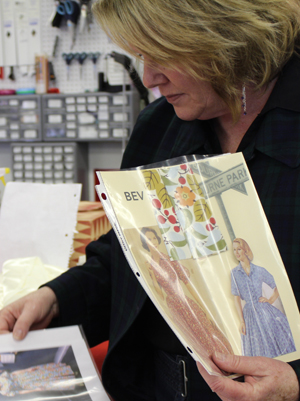Professor reveals characters through costume at The Rep
As a young girl growing up in western Georgia, Yslan Hicks watched her mother and grandmother work wonders with a variety of fabrics.
 Working with textiles was something Hicks initially rejected in her youth, but it turns out the long-time associate professor of costume design in UALR’s Department of Theatre Arts and Dance found a similar calling after all.
Working with textiles was something Hicks initially rejected in her youth, but it turns out the long-time associate professor of costume design in UALR’s Department of Theatre Arts and Dance found a similar calling after all.
“It just came naturally to me,” she said. “For whatever reason, it clicked.”
Besides, costume design is not a big leap from the thick storytelling tradition found throughout human history, said Hicks, who majored in drama during college.
“A costume projects information about the individual that helps tell their story. And it’s a common experience for every one of us,” she said. “It conveys something about who we are, our age, our geographic or cultural orientation, and our desire to conform or not to conform.”
Designing for “Clybourne Park”
Her most recent work can be seen on the actors taking the stage to perform in “Clybourne Park,” the Pulitzer Prize and Tony Award-winning play being brought to life at the Arkansas Repertory Theatre through Feb. 9.
 “Clybourne Park” marks the 15th time The Rep has extended an invitation to Hicks to work as costume designer. Her previous credits include designing costumes for such popular productions as “Anything Goes,” “A Chorus Line,” “Born Yesterday,” and “Into the Woods.”
“Clybourne Park” marks the 15th time The Rep has extended an invitation to Hicks to work as costume designer. Her previous credits include designing costumes for such popular productions as “Anything Goes,” “A Chorus Line,” “Born Yesterday,” and “Into the Woods.”
To create the appropriate 1950s-era costumes for the actors of “Clybourne Park,” Hicks began looking through the script last September.
Soaking in the playwright’s words enable a costume designer to “know it in your bones,” according to Hicks, and a thorough script analysis should become the point of departure for building characters.
Hicks said every last detail–down to such minutia as what a Rotary pin from 1959 would look like–lends integrity to the costumes, the characters, and the play.
“It matters that clothing silhouette and details are the right time period, that they are true to the character’s nature, and that the outcome reflects a collaborative, collective endeavor,” she said.
“The quality of my work comes from the willingness to collaborate. The solutions that are right for the combination of artists at this moment, may not be the same solution for another combination of artists at a different moment,” Hicks said.
Hicks’ other design credits include productions at the Lincoln Center Institute in New York City, the Goodman Theatre in Chicago, Portland Center Stage in Oregon, the Old Globe in San Diego, and Williamstown Theatre Festival in Williamstown, Mass.
As an artistic associate at Lifeline Theatre in Chicago, she designed a number of literary adaptations including characters from Dracula, Pride and Prejudice, and Jane Eyre. Hicks has previously taught at The University of Tulsa and Tulane University.
Drawing inspiration from students
Hicks said her professional work outside the classroom has helped her stay abreast of developments and has improved her ability to impart what she knows about the art and science of costume design to her students.
In addition, Hicks said staying in contact with former students who are now professionals in the field helps enrich the classroom experience for current students.
For example, a former student who worked on the recent Broadway production of Spiderman was able to Skype with current students to provide real-world guidance and advice.
Asked what her daily “costume” says about her, Hicks paused briefly to reflect before answering.
“I always want to look as if I can be trusted to do the job,” she said. “I want to be formal but accessible; whether it is working with students or actors, I do think it matters.”
Hicks said she is never more free or more herself than when she is engaged in costume designing. But she is quick to point out that it is a gift that is simply born out of great storytelling.
“And I do think theater changes lives,” she said. “That’s why it is so important our students come into contact with it.”